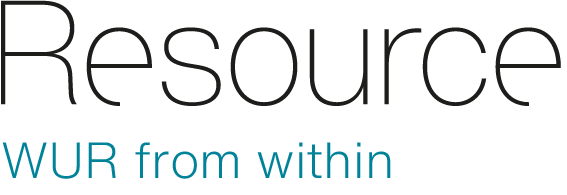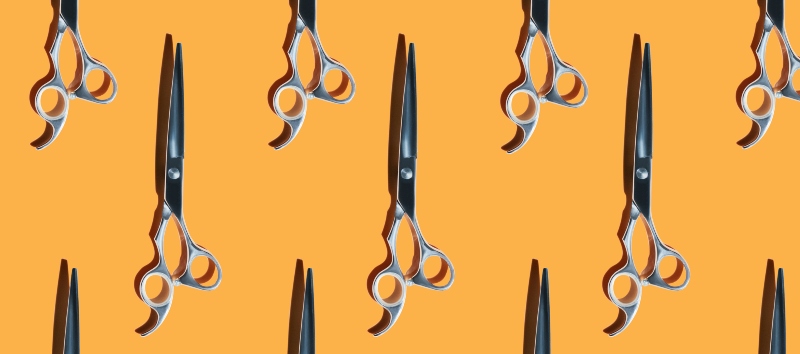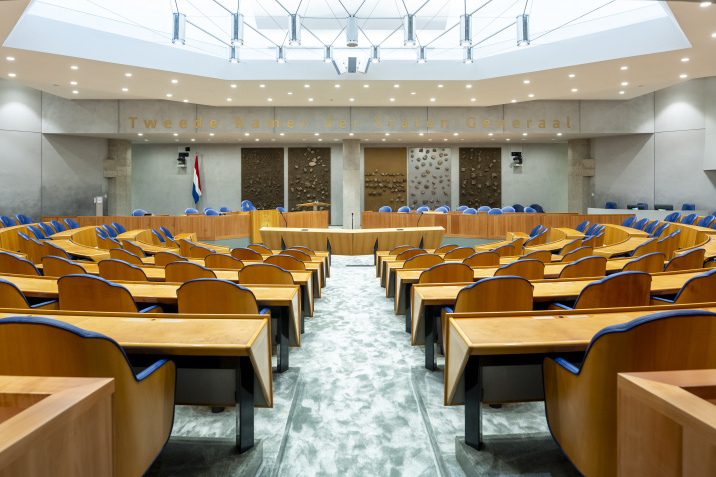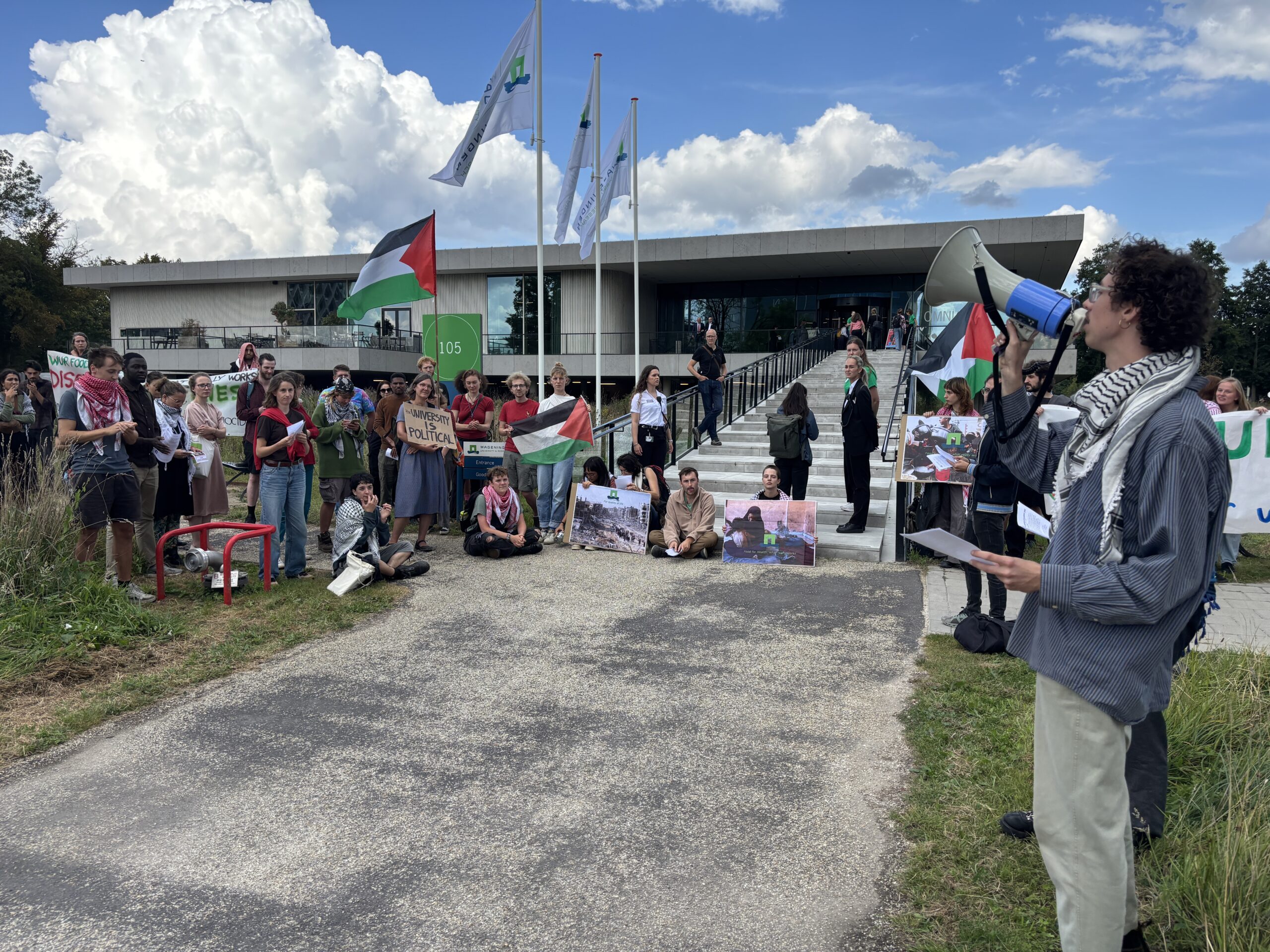It became clear in the past month that the support services will have to find combined savings of 13 million euros, which comes down to 80 to 115 jobs. Corporate Communications & Marketing will see the biggest cuts, with the budget shrinking by a quarter.
The exact details of the plans are not yet known; the proposals have been submitted to the representative bodies for their advice (see inset). How do the employees involved feel about the situation? ‘I can’t give my team any clarity about what will happen next.’
‘All that will be left is a front desk job’
Marcel Vijn, Science Shop project manager
‘The Science Shop is a direct link between science, the general public and society at large. So cutting this institute’s budget is the wrong kind of cutback. Really you should be doubling the budget rather than eliminating it. Universities and research have drifted away out of sight in right-wing public opinion. People are no longer involved in what is going on at universities. These cuts mean that you are turning your back on society. The Science Shop lets you show a friendly face: you help community groups who are facing problems or have questions.
‘We do about a dozen projects a year, and get funding of 35,000 euros per project. I’ve been doing these projects for 15 years now alongside my work as a researcher at Plant Sciences. The Science Shop also has two coordinators, who make up one FTE in total. After the cuts, all that will be left is a front-desk job. What can we do without a budget? WUR’s Science Shop is the only one of its kind still going. Science shops elsewhere have degenerated into student help desks. We are the only place to let researchers do paid work on citizen projects. The Science Shop has survived has survived many storms already, so I hope it will this time too. I hope the Executive Board looks at what image we want to project, who we want to be. A Science Shop is part of that.’
‘One colleague resigned because of the uncertainty’
Steef van Gorkum, Corporate Marketing & Communications web editor.
‘My team — 11 employees including me — are responsible for nearly everything that gets posted on the WUR website. Some of us advise business units on their online visibility via the WUR platforms. The exact consequences of these cuts will only become clear for the web editors mid-2026, after the launch of the new website and intranet. We don’t have enough details at present to get a picture of the impact.
I see a lot of potential cuts in the plan for things we are already working on or that have been implemented. Anyway, WUR will always have a website, so my team’s expertise will always be necessary. We have already been shrinking anyway the last while. When staff left, their positions weren’t filled and one colleague resigned recently because of the uncertainty surrounding the cuts. I can’t give my team any clarity about what will happen next. I don’t blame anyone for the uncertainty, but it’s annoying it is lasting so long.’
‘It will basically be a step backwards’
Olaf van Miltenburg, Corporate Marketing & Communications Storytelling team
‘A lot of what is posted on the WUR channels is made and prepared by my team of seven people. According to the savings plan, we need to reduce the number of content makers. We recently changed our way of working. Until last summer, departments were able to hire in our content makers. That meant the content on the WUR site was determined by the communications budget for the individual chair groups and departments. Now we are no longer hired by the science groups; we collaborate with them.
‘We have a smaller team of content makers who produce stories we select jointly with the science groups because they help project WUR’s image — based on the strategic plan. This lets us create cohesion and uniformity in our corporate communications, which improves the quality and efficiency. In the past, you might see three articles about the same topic, for example on the WUR website, in Wageningen World and in Kennis Online, written by three different people. Merging the creative process will let us use the same input in a variety of forms for multiple platforms, including social media. If we switch to a system with a flexible outer layer — as proposed in the savings plan — and essentially reintroduce fragmentation in the creative process, that will be a step backwards.’
‘We were actually scaling up the team’
Johan Kanis, Recruitment manager
‘The task of the team of eight recruiters is to fill the job vacancies. In the past year we had over 1,000 vacancies and more than 40,000 applicants. The proposed plans will presumably lead to a fall in the number of job vacancies, so it seems logical to look at reducing the team to a realistic size. But we still expect 600 vacancies this year and the job market is tight. It is hard to recruit people for the more senior positions in research, teaching and support. You need to go all out to get the right people.
Recruitment is our main task, but we were actually working on scaling up the team this year so we could do more on selection. After all, if you get applicants you want to make the right selection. We offer training courses, appropriate selection questions and guides for conducting the interview and scoring candidates. The cuts mean we will need to make choices. What can we still do with less capacity and without compromising on quality? The focus will remain on recruitment because WUR has ambitions and needs the best people to achieve those ambitions.’
‘What part of our work will continue?’
Maarten van Schaik, Alumni Relations team
‘No one enjoys having to draw up plans like these as you’ll always have to make tough choices. Even so, I found it quite confrontational as the Alumni Relations team leader to see my team mentioned so explicitly. Even though the plans contain practical points, there is still a lot of uncertainty. What part of our work will be able to continue? Who will be implementing this? And what resources will we have?
The suggested idea of deploying a flexible outer layer is also quite costly, after all. These things will remain uncertain in the months to come. Personally, I sincerely hope WUR continues to focus on a long-term relationship with alumni to keep them involved and committed, rather than alumni relations turning into something purely transactional.’
Councils get a say, and then?
Before CC&M and Facilities & Services can implement their savings plan — and individual employees hear whether they will lose their jobs — the representative bodies will examine the proposals. They will get input from staff members, as WUR Council put out a call on the intranet for comments. ‘We have never had so much input,’ says chair Blair van Pelt. ‘From the entire organization.’ She can’t say anything yet about the substance of the comments but adds ‘they are valuable for us when drawing up our advice.’
The Central Works Council (COR) and Student Staff Council (GV), both WUR central representative bodies, are now considering the plan. They have the right to be consulted on the savings plan: ‘COR and GV have joint meetings as WUR Council, but the advice is issued separately by COR and GV.’
The Executive Board must issue a response to the advice. And if it doesn’t follow the advice, it must come up with good reasons. Van Pelt: ‘We will present a draft version first, so the Board won’t be surprised by the recommendations.’ The aim is for COR and GV to issue their advice in early July.

 Illustratie Anastasiia T./Unsplash
Illustratie Anastasiia T./Unsplash 

